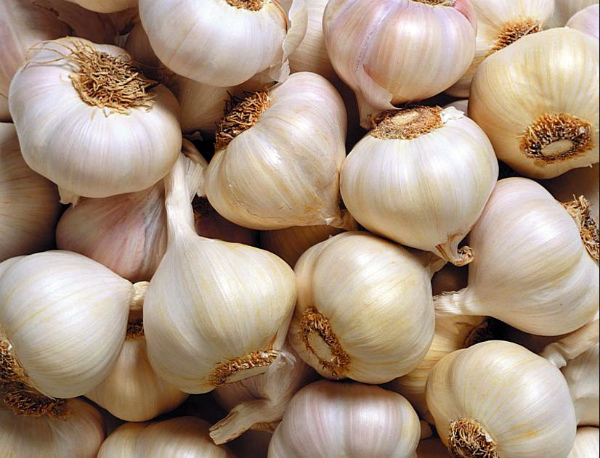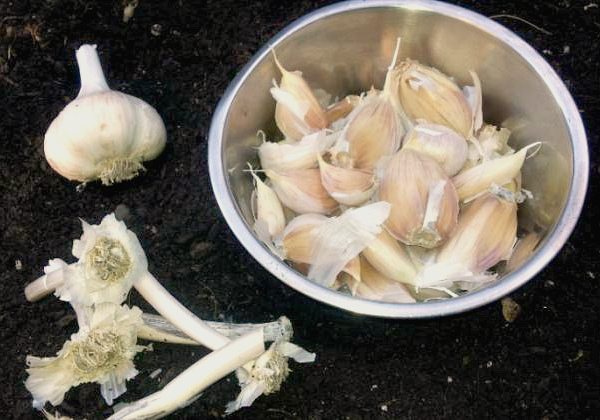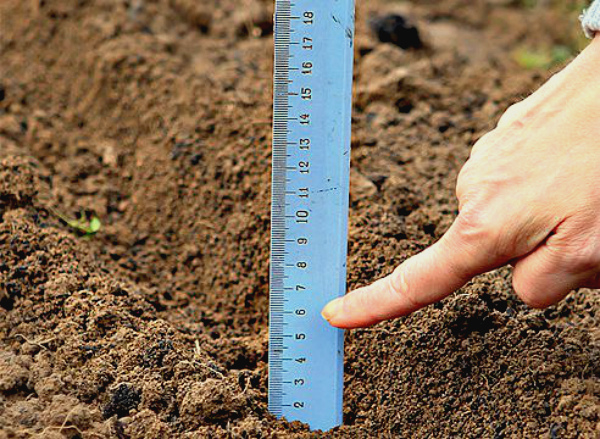How deep should garlic be planted before winter?
Content
When to plant
You need to plant garlic in the fall, shortly after you remove the predecessors from the garden. Be guided by the weather in your region in the autumn-winter season: you need to plant a crop 30-50 days before the first frost. As you can imagine, in the Moscow region it can be the beginning or the middle of November, while in Siberia it can be the middle or the end of October.
Thus, you can plant garlic for the winter from late September to late October. According to the lunar calendar, the optimal landing dates are September 26, 27, 30, as well as October 1, 4, 5, 11, 12. During the time elapsed from the moment of planting, before the onset of cold weather, the plant manages to develop the root system and take root in the soil, which makes it easy to survive the winter.
How to plant
It is important not only to decide on the date of planting, but also to properly prepare the site for this event. Of course, we are talking about fertilizing and disinfecting the soil, marking for beds and forming holes. The preparation of the seed cannot be ignored in any way, because it will not be possible to just stick in the cloves or bulbs of garlic so that they grow as needed.
Garlic preparation
The first stage of preparing garlic for planting is the preliminary processing of the seed, that is, the cloves. If you are planting garlic for the first time, then take care that the acquired cloves meet the following requirements:
- were grown in your area;
- were of the same grade;
- were not collected from diseased plants;
- were stored correctly.
You should only choose large cloves, since they germinate best and give a higher yield. It is they who need to be soaked in a solution of potassium permanganate or copper sulfate for a day. To prepare a solution of potassium permanganate, dilute the crystals in water so that it turns pink. Or dissolve 1 tablespoon of copper sulfate in 10 liters of water.
Thus, you will not only disinfect the cloves, but also increase the plant's immunity to many fungal diseases.
Preparing the landing site
In order for the plants to survive the winter well, it is necessary to properly prepare the soil on the site. It is important to choose the right predecessors and observe the crop rotation. Garlic grows well after cucumbers, peppers, eggplant, pumpkins, zucchini and berry bushes. That is, mainly after annual crops, which have a fast growing season. But after potatoes, Jerusalem artichoke, radish, turnips, carrots, it is better not to plant. The fact is that even taking into account fertilization, the soil will not have time to recover during the winter, and you will get a doubly depleted area.
Garlic grows well in loamy, neutral soils, so take care to normalize the acidity of the soil.
About a month and a half before planting, that is, in early August, apply fertilizer to the soil. For 1 square meter, you will need: 1 bucket of compost or humus from horse manure, 1 tablespoon of nitrophosphate, 10 g of superphosphate, 1 glass of dolomite flour. A layer of soil 20 centimeters deep should be carefully dug up, then leveled and proceed to the second stage of fertilization.Mark the holes for the garlic, pour them with copper sulfate, dissolving 40 g of the preparation in 10 liters of water. As soon as you finish watering, cover the beds with foil.
How deep
It is important to correctly determine the planting depth.
If you put the clove too close to the surface, the plant will not survive the winter, if, on the contrary, plant it too deeply, the sprouts will germinate much later.
In the holes prepared in August, 15-17 centimeters deep, pour 2-3 centimeters of river sand. Place cloves in each hole and then mulch with peat mixed with sawdust.
If you are growing a plant from bulbs, then they should be placed at a depth of 3 centimeters, trying to place them more tightly to each other. The distance between the bulbs should not exceed 2-3 centimeters.
Before the cold weather begins, you can cover the beds with polyethylene or roofing material. If they promise a snowless winter, do not take off the shelter, but if it does snow, take off so that the snow creates a natural shelter.
Once again, briefly on how to grow winter garlic varieties:
- It is imperative to observe the crop rotation and not plant the plant for two years in a row in the same place. This will help increase the yield and protect crops from fungal diseases. Keep track of what crops grew in the garden before garlic: cucumbers, peppers, eggplants, pumpkins, zucchini, berry bushes will be the best predecessors.
- Be careful with organic fertilization. Manure is a good help for winter growth, but without additional soil treatment with dolomite flour or lime, you would rather harm the garlic than help it grow.
- Remember to process the garlic cloves before sowing. Use copper sulfate or pink potassium permanganate solution for this. Sow only whole, non-spoiled cloves.
- Be careful when planting - do not damage the cloves, try not to deepen them excessively into the soil, so as not to complicate the development of the root system.
- Cover the garlic beds after watering. Thus, you stimulate the plant to grow faster, which will help to meet the winter cold, so to speak, fully armed.
Video "Garlic Planting Tool"
See what technology of planting garlic with a special device can be applied to get the maximum yield with the minimum of effort.




